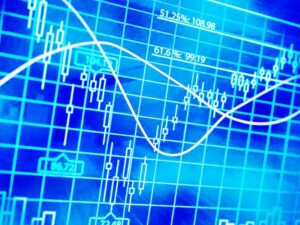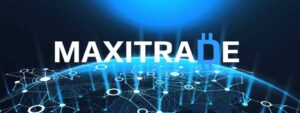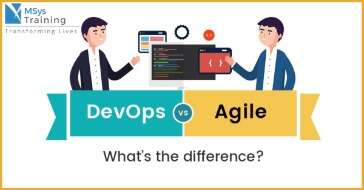Contents
The top holdings of these funds are Mahindra & Mahindra Ltd., Bajaj Finserv Ltd., and Reliance Industries Ltd., respectively. While Futures and options have expiry dates , ETFs have no expiry date. In summary, F&O are trading products, whereas ETFs are investment products. Reproduction of news articles, photos, videos or any other content in whole or in part in any form or medium without express writtern permission of moneycontrol.com is prohibited. Designed especially for traders looking to tap the profit opportunities of volatile markets. Needs to review the security of your connection before proceeding.
During market correction, your ETF NAV will fall but you will not have to pay any additional money. Full BioNathan Reiff has been writing expert articles and news about financial topics such as investing and trading, cryptocurrency, ETFs, and alternative investments on Investopedia since 2016. Mutual Fund investments are subject to market top trading strategies forex risks, read all scheme related documents carefully. ETFs do not aim to create alpha over the benchmark index that it tracks; it aims to replicate the returns of the benchmark index. For all investors looking to unearth stocks that are poised to move. The bond market is the collective name given to all trades and issues of debt securities.

NFTY tracks the NIFTY 50 Equal Weight Index, which is an equally weighted version of the NIFTY 50 Index, including the 50 largest and most liquid securities on the National Stock Exchange of India. NFTY focuses on large-cap companies and includes a blend of growth and value stocks. Financials make up the largest portion of the portfolio, at over 23%, followed by materials and consumer discretionary companies. ETFs bring simplicity to your investing compared to actively managed funds. You do not have to analyze past performance or understand the fund manager’s investment style or how the fund has done in up and down markets etc. Most ETFs track the large cap indices like Nifty, Sensex, BSE – 100, Nifty 100, Nifty Next 50 etc.
Why invest in ETFs?
It focuses on large cap companies across the Indian economy, with energy, materials, and bank stocks accounting for nearly half of invested assets. The expense ratio of ETFs is much lower than their mutual fund counterparts. The expense ratios of ETFs can be as low as 0.25%, compared to the expense ratio of mutual funds which are usually in the range of 1.5% – 2.25%. Unless the mutual funds generates considerable alpha in the long term, they may not be able to beat the ETF returns in the long term. An India exchange-traded fund tracks the collective performance of securities listed on a stock exchange in India. You can invest in mutual funds directly through AMC or through an AMFI certified mutual fund distributors .
In addition to STT and brokerage, investors also have to pay charges for the demat account for holding the ETFs in electronic form. Index funds can be bought just like any other mutual fund scheme but their expense ratio is slightly higher than Exchange traded funds. ETFs can be bought and sold only on stock exchanges on a continuous basis like stocks. Unlike mutual funds where the prices are declared at the end of the day, ETF prices keep changing during the entire trading session. At the end of the day, however, you will get the closing NAV of the ETF.

Consumer discretionary stocks make up over 55% of holdings, and consumer staples make up the remainder. Bank ETFs invests in a basket of banking stocks listed on the stock exchanges. It aims to track a particular market index like Sensex, Nifty, BSE 100, Nifty 100 etc. Index ETFs invest in a basket of stocks which replicate the Index the ETF aims to track. When investing in an Index ETF you should expect to get the index returns which your ETF is tracking, nothing more or nothing less. There are eight India ETFs that trade in the U.S., excluding inverse and leveraged ETFs, as well as funds with less than $50 million inassets under management .
Performance is the focus
However, to invest in ETFs, it is mandatory to have a demat and trading account with a stock broker. An ETF is a basket of stocks that reflects the composition of an Index, like S&P CNX Nifty or BSE Sensex. The ETFs trading value is based on the net asset value of the underlying stocks that it represents. Think of it as a Mutual Fund that you can buy and sell in real-time at a price that change throughout the day. INCO targets the Indxx India Consumer Index, which is a free-float adjusted market capitalization-weighted index of no more than 30 companies in the consumer industry in India. Companies included in the index focus on autos, food products, beverages, media, household products, and similar areas.
- The ETF provides a valuation-centric approach to India’s equity markets, weighting individual holdings by earnings rather than by market capitalization.
- To invest in ETFs you need to have demat and trading account with a stock broker.
- Investopedia does not include all offers available in the marketplace.
- An ETF is a basket of stocks that reflects the composition of an Index, like the Sensex or the Nifty.
The offers that appear in this table are from partnerships from which Investopedia receives compensation. Investopedia does not include all offers available in the marketplace. The growth was pronounced enough to allow India to surpass the U.K. To become the fifth-largest economy in the world in the final quarter of 2021. Mirae Asset ETF is a part of Mirae Asset Mutual Fund and is used for Exchange Traded Funds managed by Mirae Asset Investment Managers Private Limited.
The S&P 500 Pure Value Index is a market-cap-weighted index comprised of stocks within the S&P 500 Index exhibiting strong value characteristics. The CNX Nifty is a stock index composed of 50 of the largest and most liquid stocks on the National Stock Exchange of India. While we believe the information provided herein is reliable, we do not warrant its accuracy or completeness. The views and strategies described in our content may not be suitable for all investors. Because market and economic conditions are subject to rapid change, all comments, opinions, and analyses contained within our content are rendered as of the date of the posting and may change without notice. The material is not intended as a complete analysis of every material fact regarding any country, region, market, industry, investment, or strategy.
Diverse ETF’s zijn beschikbaar voor het beleggen in goud
An ETF is a basket of stocks that reflects the composition of an Index, like the Sensex or the Nifty. ETF prices reflect the net asset value of basket of stocks in which it is investing. Exchange Traded Funds are actually Index Funds that are listed and traded on exchanges Frontend Vs Backend like stocks and are passively managed. Mutual funds aim to generate alpha by outperforming a market benchmark, whereas ETFs aim to track the relevant index and replicate it returns. To invest in ETFs you need to have demat and trading account with a stock broker.
The Russell Top 200 Index tracks the stock market performance of the 200 largest companies included in the Russell 3000 index. Some investors may buy or sell an ETF in the Futures and Options (F&O) market, with a much lower capital outlay compared to a basket of stocks. Given current lot sizes in the NSE and margin requirements, minimum capital outlay in ETFs will still be much lower compared to futures. ETFs are open ended schemes which try to replicate the return of an Index it is tracking. The fund has to invest minimum 95% of its total assets in securities of the Index that it is tracking.
You can simply select an index and invest in a low cost ETF, which tracks that index and your job is done. Exchange Traded Funds are essentially Index Funds that are listed and traded on exchanges like stocks. Globally, ETFs have opened a whole new panorama of investment opportunities to Retail as well as Institutional Money Managers. They enable investors to gain broad exposure to entire stock markets in different Countries and specific sectors with relative ease, on a real-time basis and at a lower cost than many other forms of investing. The ETF provides a valuation-centric approach to India’s equity markets, weighting individual holdings by earnings rather than by market capitalization.
Liquid ETFs invest in a basket of short term Government securities, call money or money market instruments of short term maturities. The objective of liquid ETFs is to enhance returns and reduce price risk. The India exchange-traded funds with the best one-year trailing total returns are INCO, NFTY, and EPI. However, just like shares, ETF prices change real time throughout the day based on demand and supply in the market.
Mutual funds are subject to two kinds of risk – Systematic and Unsystematic risks. Systematic risk is unavoidable because equities as an asset class are volatile. Both ETFs and actively managed funds are subject to market risks. Unsystematic risk is company specific risk or sector specific risk. Exchange Traded Funds do not have any unsystematic risk because they simply track the index; therefore, it is a good investment option if you want to totally avoid unsystematic risk.

An Exchange Traded Fund is a fund that trades on an exchange, just like a stock and replicate the portfolio and performance of a publically available Index. The indices, which by their method of construction based on market capitalization, eliminate or at least, reduce the weight of underperformers in the index portfolio. Therefore, by extension ETFs also eliminate or at least reduce the weight of underperformers in their portfolio. These ETFs may track global markets or track a country-specific benchmark index. These ETFs can be a good investment option if you want to diversify your investments into foreign securities.
VanEck Vectors Junior Gold Miners ETF
The fundamental attributes of index funds are like ETFs however Index funds are not listed on the exchange, while the investment process is just like any other mutual fund scheme. Investors do their buy / sell transactions with the AMC whereas ETFs are listed on stock exchanges like shares. Investors can buy or sell ETFs in the stock exchange at a real time price. If you buy ETFs there is no securities transaction tax , but when you sell then STT is applicable. Also, you have to pay brokerage every time you buy and sell ETFs.
Like shares of a company, the units of the Gold ETFs are also traded on the stock exchange. Many investors use ETFs and index funds synonymously which is not correct. Though there are few similarities between them, the investors must understand the differences between the two. The most important difference between index fund and difference between git and github and gitlab ETF is that, index funds are mutual fund schemes to invest in which you do not need demat or share trading account since they are not listed on the exchange. You can buy index funds directly from the AMC or through a MFD like any other mutual fund schemes. But to invest in ETFs you must have demat and share trading account.
Invesco Physical Gold ETC
EWithout having a trading and demat account with a stock broker, you cannot invest in ETFs. However for any reason, if you are unable to open a trading and demat account, you can invest in “ETF like” investment products where you can invest in a passive fund which tracks an index. These are called Index funds which like ETFs aim to track a particular index like Sensex, Nifty, BSE – 100, Nifty 100, Bank Nifty etc.
In F&O you can take a much bigger position with a smaller capital outlay. F&O positions are marked to market and in case of market correction; investors may have to provide additional money for maintaining margin even before expiry. ETFs are not leveraged positions and hence there is no margin requirement.
